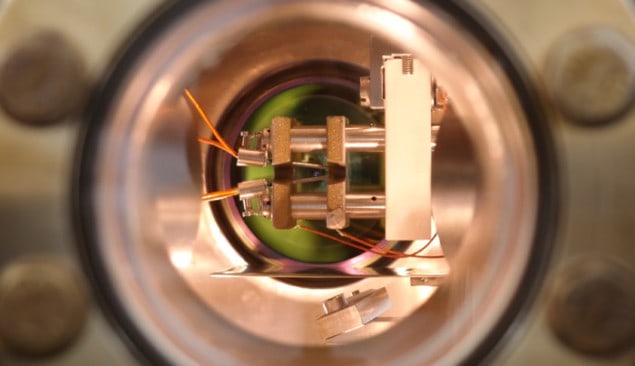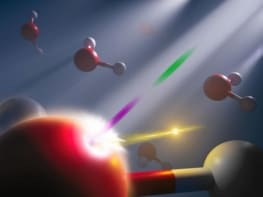
Physicists in Germany have taken mechanical miniaturization to the ultimate limit by producing a heat engine – one of the key inventions of classical thermodynamics – made of only one atom, and have measured its output. While microscale heat engines have been proposed and built in the past, this single-atom design is the smallest to date.
The heat engine, which converts a difference in temperature to mechanical work, is the archetypal machine of classical thermodynamics. The classical thermodynamic definition of temperature involves the average energy of a large number of particles, and is therefore not directly applicable to a single atom. However, a well-defined, classical thermodynamic temperature can still be obtained for such a particle, using the so-called ergodic theorem, which states that the average energy of a large number of particles in a region of space is equal to the energy of a single particle over a period of time. “That was a really tricky part of the design of the heat engine: how can you make use of the time-averaged definition of temperature?” explains lead researcher Kilian Singer of the University of Mainz.
Temperature trap
The solution was to confine the particle – which in this case was a calcium ion (40Ca+) – in a funnel-shaped trap, allowing it to undergo Brownian motion in a radial direction. The researchers then heated the ion using electrical noise, and as its temperature increased, its oscillations in the radial direction became larger, causing it to sample regions of higher potential, sending the particle towards the end of the trap at which it was less tightly confined. “You can think of it like a balloon in a funnel,” explains team member Johannes Roßnagel, who is Singer’s PhD student. “When you inflate the balloon, it will move towards the larger end of the funnel.”
When the electrical noise was switched off, however, the ion cooled, causing it to sink back towards the narrower, steeper end of the trap. By turning the noise on and off periodically, the researchers set up axial oscillations of the ion between the two ends of the trap. If left undamped, these oscillations would have become increasingly large until the particle escaped the trap. However, the researchers applied another laser to damp the oscillations, thus maintaining the particle in steady harmonic oscillations.
Auto comparison
“We have characterized the damping behaviour of the laser very well and we know exactly how much energy is dissipated by this damping laser,” says Roßnagel. “We know that, in a steady state, the energy produced by the engine and the energy damped by the damping laser are equivalent. That’s how we determine the output energy of the engine.” The researchers calculated the output power, finding it to be around 3.5 ×10–22 W. When scaled by the number of particles and difference between the temperatures of the hot and cold reservoirs, the researchers calculate that this output power is comparable to that of a modern car engine.
While Roßnagel himself admits that “you will never find a Mercedes driven by our heat engine”, he says that the team’s main goal is to get a better understanding of the thermodynamics of single particles, for the future development of other devices. Specifically, the researchers are interested in turning the idea around to produce refrigerators for heat management in nano-electronics. Their next research goal is to cool the atom further and confine it more tightly, so that it no longer behaves as a classical particle undergoing Brownian motion but as a quantum wavepacket. “The room left at the bottom is in temperature,” says Singer.
Cold-atom physicist Jean-Philippe Brantut of ETH Zurich describes the work as “a major achievement”, both as a “milestone” and as a pointer towards future work. “From this point onwards,” he says, “they can really start to explore how thermodynamics behaves in contact with quantum mechanics, and that’s somewhere you have a lot of open questions.”
The research is published in Science.



